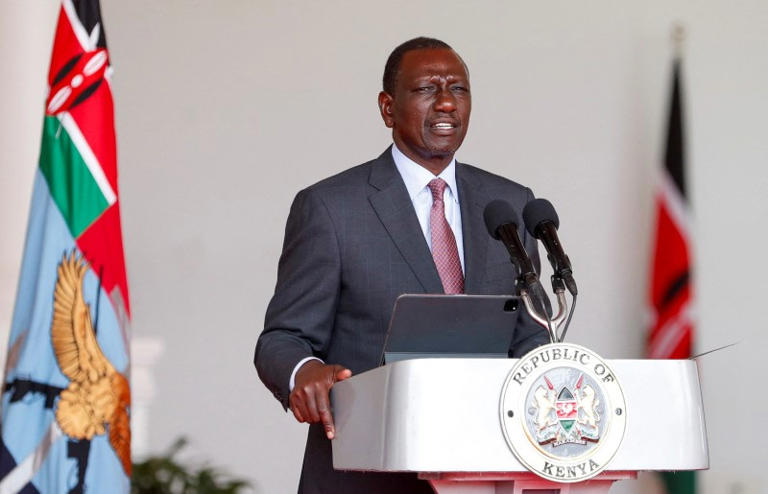Kenya’s financial landscape is facing mounting pressures as nervous investors shy away from long-dated Treasury bills and bonds. Recent central bank data reveals a stark drop in demand for these securities, posing significant obstacles for the government’s fiscal strategy, especially in light of recent policy shifts and economic instability.
Diminished Investor Appetite
On August 1, Kenya’s central bank auctioned its benchmark 1-year Treasury bill but attracted less than 10% of the demand for the amount offered. This tepid response underscores growing investor apprehensions about the government’s financial health and its ability to manage a substantial debt burden. The low demand reflects broader concerns about the country’s economic stability and the effectiveness of its debt management strategies.
Kenneth Minjire, a senior associate at AIB-AXYS, suggests that this situation could indicate deeper structural problems. He argues that the government’s approach might only delay addressing underlying fiscal issues rather than providing a sustainable solution. This reluctance from investors places additional strain on the government’s efforts to manage its debt and funding needs.
Impact of Reversed Tax Hikes
The Kenyan government’s recent reversal of proposed tax hikes, initially set to raise over 346 billion shillings ($2.67 billion), has significantly altered its fiscal strategy. The tax hikes were abandoned following widespread protests that resulted in over 50 fatalities. The backlash forced President William Ruto to retreat from these controversial measures, leading the finance ministry to increase its local borrowing targets by 42%, totaling 404.6 billion shillings ($3.12 billion).
This shift comes at a time when other debt instruments, except for 91-day Treasury bills, have been underperforming in auctions. The increased borrowing targets are intended to compensate for the revenue loss caused by the tax reversal, but they also add pressure to an already strained domestic debt market.
Decline in Demand for Debt Instruments
The central bank’s weekly auction data highlights a dramatic fall in demand for Treasury bills and bonds amid recent domestic unrest and violence. During the week of June 24, investor subscription for Treasury bills was only one-third of the offered amount, while bond auctions saw a mere 2.4% subscription rate. This decline contrasts sharply with previous high demand levels, where Treasury bills had a subscription rate of 94.7%, and bonds were frequently oversubscribed.
The decrease in demand reflects heightened investor concerns about Kenya’s fiscal stability and the broader economic impact of the ongoing unrest. The significant drop in subscription rates indicates that investors are increasingly wary of the risks associated with Kenyan debt instruments.
Government and Central Bank Responses
Central Bank Governor Kamau Thugge has attempted to reassure stakeholders by downplaying immediate concerns about local financing. He argues that it is still early in the financial year and expresses confidence that Kenya will meet its domestic financing needs despite the revised borrowing targets. However, the finance ministry has not commented on potential adjustments to its borrowing strategy in response to the evolving economic situation.
Finance Minister John Mbadi, who recently took office, has acknowledged the high level of domestic debt, which currently stands at $750 billion—three times the amount of external debt. Mbadi’s admission of over-borrowing highlights the need for effective debt management and fiscal discipline. The Kenya Bankers Association has warned that the withdrawal of the funding bill and subsequent credit rating downgrades could further constrain Kenya’s external funding options.
Challenges in Eurobond Issuance and IMF Funding
Kenya’s Eurobonds have experienced a decline in value, raising the cost of potential future issuances. This situation complicates efforts to secure new funding from international markets. Additionally, potential delays in obtaining IMF funding add another layer of uncertainty. Kenya had secured a staff-level agreement for the seventh review of its $3.6 billion bailout before the protests, but the IMF board had yet to approve the agreement.
The government’s revised economic plan, which excludes the abandoned tax hikes, aims to secure the next $600 million tranche from the IMF. However, the mixed results of the government’s efforts to address the fiscal gap have raised concerns about the plan’s effectiveness. Ruto’s initial pledge to cut 346 billion shillings in spending was reduced by half, increasing the risk to Kenya’s financial stability.
Political Pressures and Fiscal Targets
Fitch Ratings has recently downgraded Kenya’s credit rating, reflecting the increased difficulty in meeting fiscal targets. Ongoing political pressures, including near-weekly protests against potential new taxes, further complicate the country’s fiscal landscape. Opposition leaders, such as Martha Karua, emphasize the need to remain vigilant and address economic issues without imposing additional tax burdens.
The Kenyan government’s ability to navigate these fiscal challenges and implement effective debt management strategies will be crucial in determining the country’s economic stability and growth prospects. The interplay between domestic borrowing pressures, investor sentiment, and political factors will shape Kenya’s financial future in the coming months.
